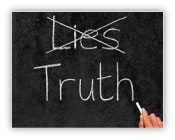
Cover ups – attempts to prevent others from discovering the truth about a serious mistake, moral or ethical failure, abuse, assault or numerous other illegal actions and crimes have existed for many years.
In the past, people who became aware of a cover up had limited options to come forward and report the truth. Most (if not all) of the conventional reporting options, such as contacting management, calling law enforcement, telling a trusted adult or calling a company ethics line, failed to provide anonymity or even confidentiality. More recently, organizations are offering online reporting forms, text reporting and apps, but none of these options are truly anonymous either – no matter what you thought you knew or what your vendor told you. All of these conventional reporting options meant getting involved could lead to retaliation, job loss, uncomfortable interrogations, accusations and many other unwanted and underserved consequences.
But these days the Internet and Social Media offer numerous options for individuals to come forward and report truths and morally do the right thing for yourself, for someone else, for your organization or for your country.
Connecting the dots…
The evidence is clear in the links above and in more and more examples of exposed cover ups and scandals. More evidence was detailed in the most recent U.S. Securities Exchange Commission (SEC) fiscal report (ending Sept. 30, 2014) showing a record year for the SEC’s whistleblower program, both in terms of the number of tips received and the amounts it awarded tipsters.
As the cover-up era comes to an end, what should proactive organizational leaders do?
Organizational leaders basically have two options – do nothing and continue to hold your breath until you are forced to react or empower and equip your people (employees, customers, students, community members, etc.) to anonymously share what they know with their organization.
If people do not have a trusted and truly anonymous way to share what they know with their organization – and evidence clearly reveals someone always knows something – you may find yourself and your company in a much bigger, more damaging, more embarrassing and more expensive situation when people choose to report what they know to the SEC or take their reporting to Social Media.
Evidence and lessons learned do not lie…the best option is always prevention. Evidence from post-incident report have concluded over and over that prevention is possible when organizations are proactively empowering, encouraging and equipping people with the right tools to share the information they know that is then immediately and automatically routed to the right people (risk/threat assessment teams) in the right places so they can immediately and proactively do the right things to prevent negative headlines, embarrassing incidents, expensive lawsuits/fines and potential tragedies.
It is sad (and unacceptable) that even with overwhelming evidence-based data so many organizational leaders remain disconnected and choose to live in the “cover up era”. Disconnected leaders wrongly believe they can control and/or block people from sharing what they know…these disconnected leaders clearly do not understand the potential of the Internet or Social Media or how it works.
Next generation leaders realize the importance of being connected and they realize how “walking talking social media cameras” – also known as people – can proactively help their organization achieve better ethics, reputation management, protect their bottom line and work together to create a safer environment for their people and their community.
Utilizing the Internet, Social Media and “walking talking social media cameras” helps threat assessment and risk management teams be more connected and more aware of truths, cover ups, lies, suspicious activities, concerning behaviors, viral risks and threats so proactive prevention actions can be taken.
Think how much better it would be for your organization if the appropriate threat and risk team members were informed of concerning behaviors and suspicious activities BEFORE they became embarrassing media investigations, lawsuits, federal investigations, fines or tragedies?
Think about all the time, resources and money your organization is spending (wasting) in reaction mode and damage control mode when with the right tools the right people could be proactively collecting, assessing and connecting the dots to proactively intervene and prevent?
It is your move…are you going to empower, encourage and equip your people, your threat assessment team and anyone connected with your organization for today and tomorrow or remain in the cover up era?